Photo Finish: New Exhibition Celebrates Sports Photography

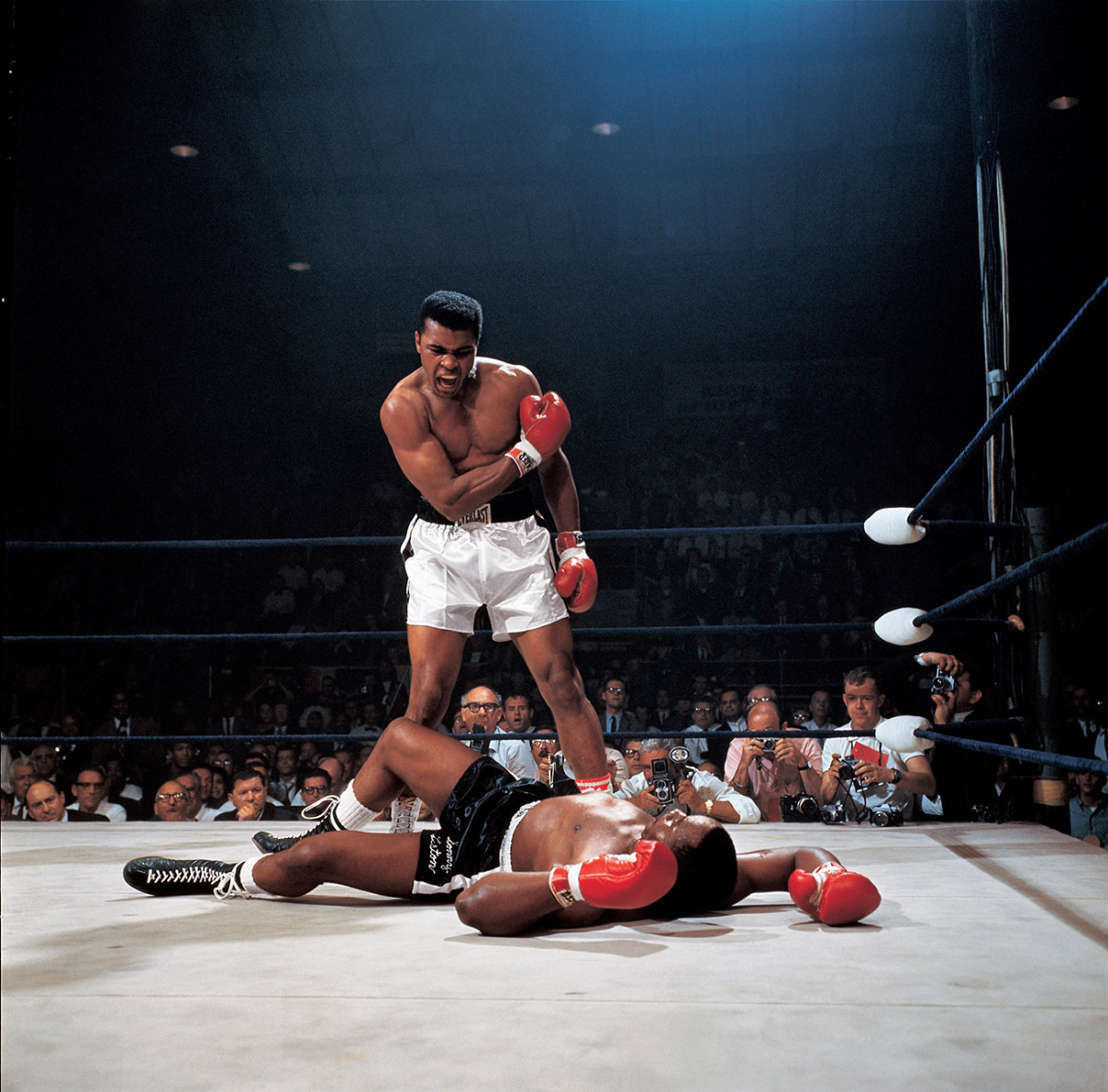
We’re surrounded by sports images — on TV, online, in magazines. They capture action, reaction, and results on the field and in the stands. But they also go beyond simple reporting. Sports photographs tell stories about games and athletes, triumphs and failures. And the best ones are works of art.
Take Neil Leifer’s classic 1965 photo of Muhammad Ali towering over a knocked-down Sonny Liston. The iconic image preserves the ultimate moment of victory — and defeat. Ali flexes his muscles, in both his arms and mouth, in a raw display of emotion as Liston lies splayed out on the mat. He’s defeated physically, and probably emotionally. It’s a photograph as beautiful, iconic, and religious as a Renaissance painting. And it’s just as timeless.
Yet one place you rarely find a shot like this is on a museum wall.
That makes Who Shot Sports: A Photographic History, 1843 to the Present at the Brooklyn Museum something special. On view through January 8, the exhibition brings together 230 photographs from 174 photographers in a first-of-its kind retrospective that tracks how important sports photography has been to the history of the art form. (Sports Illustrated provided some of the work in the show.) The images range from 19th century daguerreotypes and shots from the first modern Olympics in 1896 (which have never been shown in the US before) to classic photos from SI shooters and documentary work by photojournalists.

The show is organized roughly chronologically, but curator Gail Buckland is more interested in grouping the images thematically. The museum’s large fifth-floor gallery space is divided into nine sections highlighting action, portraits, off-the-field images, and shots of fans covering a wide range of sports: from baseball, basketball, and boxing to soccer, skiing, and racing (both horses and cars). And iconic images, like Leifer’s Ali, hang alongside lesser-known masterpieces, like Krystle Wright’s Freefall. Taken in 2014, the large black-and-white photograph captures BASE jumper Michael Tomchek moments after he drops off Castleton Tower, a 400-foot rock formation in Utah. The scope of the shot — it was taken from such a distance that Tomchek and his fellow jumpers look like black ants dotting a bleached-out sky — stops you dead in your tracks, and the death-defying subject matter makes your palms go sweaty.
But just as there are images that celebrate athletic action, there are those that make us consider the impact of sport on the body. Tim Clayton’s Boy in the Bubble finds Australian swimmer Matthew Dunn just about to emerge from the water, his head encased in an embryo of water that distorts his features and makes him look more alien than human. Howard Schatz’s large-scale time-lapses, like his 2012 work Sergio Martinez, Middleweight Boxing Champion, turns the boxer-in-training into a scientific study of motion and spatial dynamics. And Herb Ritts’ 1987 shot of Jackie Joyner-Kersee forces us to focus on the tensions and physiology of a body in motion.
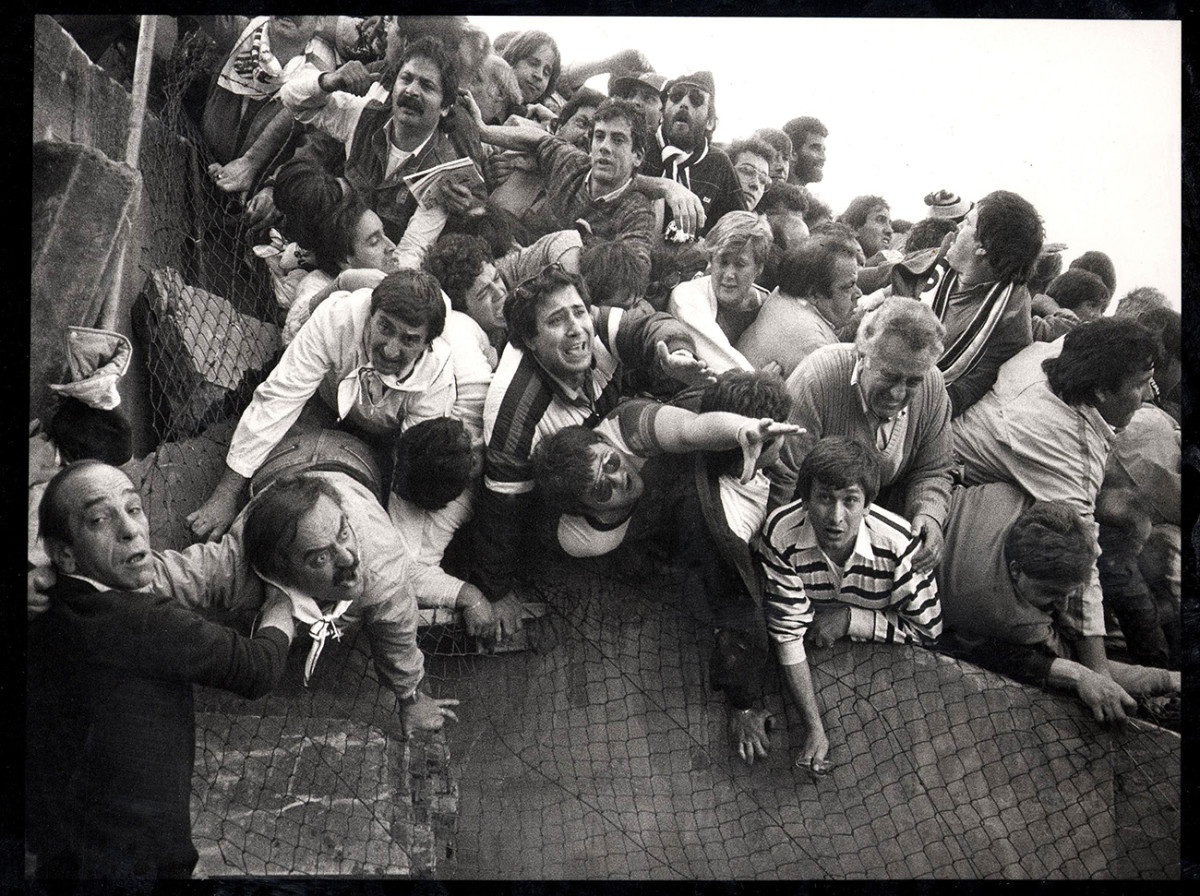
And then there are the images of fans. They document the impact sports have on us, the non-athletes, whose lives increasingly revolve around games and the people who play them — sometimes to disastrous ends. Eamonn McCabe’s harrowing photograph from the 1985 Heysel Stadium disaster in Brussels unflinchingly documents the anxiety, confusion, and fear on the faces of soccer supporters just before a wall collapsed. That’s contrasted with one of the all-time great documents of celebration: George Silk’s photograph of University of Pittsburgh students cheering Bill Mazeroski’s walk-off 1960 World Series Game 7 home run that clinched the title for the Pittsburgh Pirates. The jubilant fans are perched atop Pitt’s Cathedral of Learning, so high above everything that they might as well be in heaven. (Thanks to Maz’s blast, they likely were.)
Some of the best photos in the show, though, are of the amateur, people straddling the line between fan and athlete playing sports for any number of reasons: recreation, therapy, or training. One particular stand-out is Lucy Nicholson’s 2011 shot of 92-year-old Holocaust survivor Betty Stein playing Ping-Pong at a center for people with Alzheimer’s and dementia. Stein is in the center of the frame, her lime-green top, red paddle and orange ball contrasted with the drab gray recreation room. A small smile creeps across her lips as she enjoys the game. But her eyes, focused on the ball, seem distant — a haunting reminder of what those eyes have seen, and the ravages of the affliction she’s being treated for.

The interplay between the delicate empathy of Nicholson’s photograph and something like Leifer’s Ali gets at what makes Who Shot Sports vital. The breadth and scope of the exhibition is staggering and exhilarating. But the show is so exhaustive that it can be overwhelming. It’s possible to discuss 50 images and still have at least 50 more worth talking about. That’s not necessarily a bad thing. But it does make it difficult to spend adequate time with the work. And it can feel like you’re being bombarded with images rather than invited into them. Still, this is a show that’s long overdue. Sports photography is as worthy of consideration as art as street photography, news photography, or documentary photography — as are the shooters responsible for it.
In the end, Who Shot Sports is more than an epic collection of images — it’s a celebration of the people behind the camera. Some of the names are well known, like Leifer, Ritts, Richard Avedon, and Annie Leibovitz. Some, though, have been sidelined by time — HyPeskin, Mark Kauffman, Jules Allen — while others are ripe for personal discovery, like Wright, LordesGrobet, and Donald MiralleJr. “The photographers are as dedicated to their craft as the athletes,” curator Buckland said. And Who Shot Sports honors them as a different kind of sports hero.

Mr. Laing or Laine, 1843. Sepia-toned, salted paper photograph from calotype negative, 7¾ x 5 5/8 in. (19.6 x 14.3 cm)
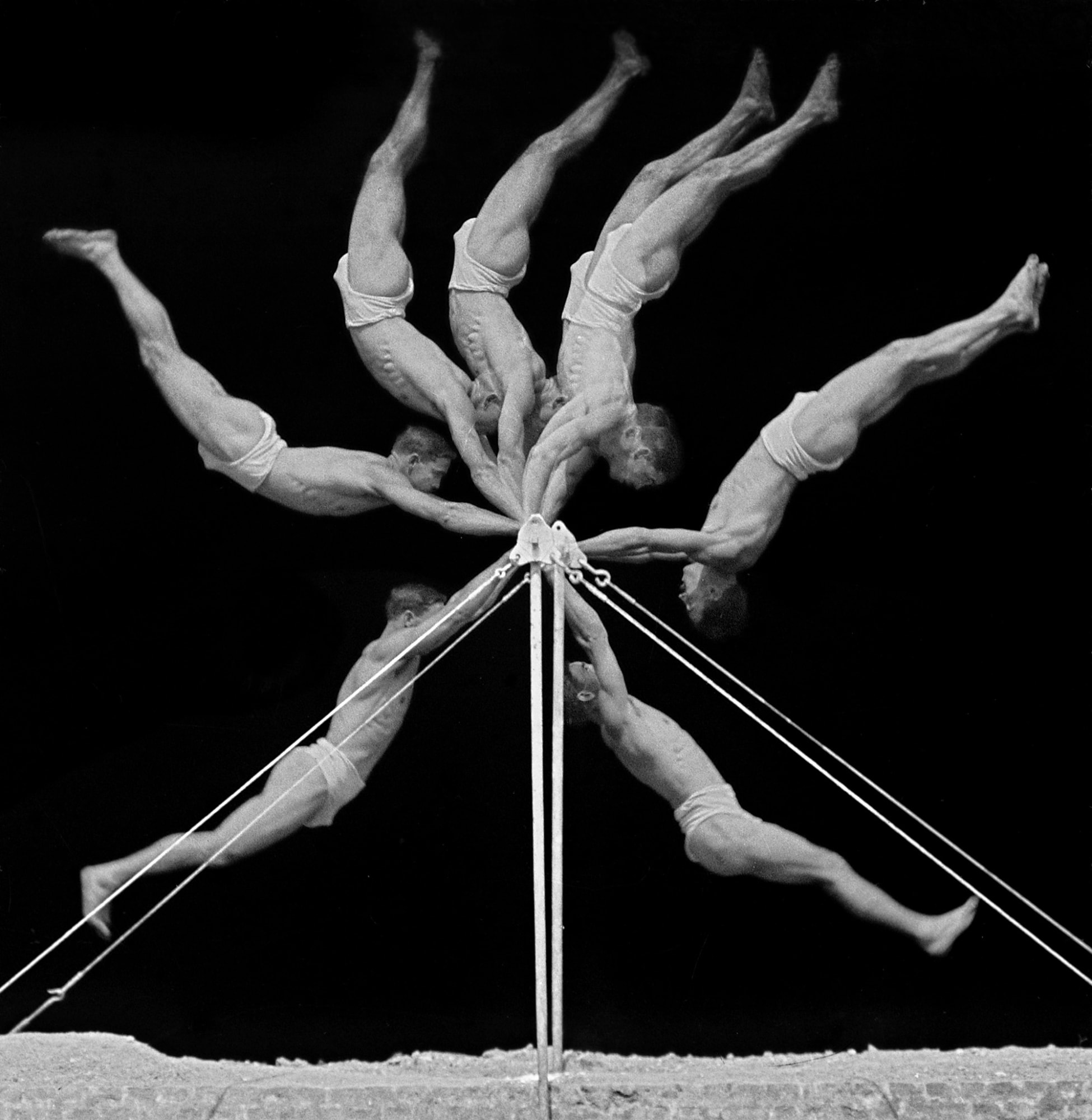
Chronophotograph of an exercise on the horizontal bar, 1906. Black-and-white photograph

American Olympic Team at the 1896 Athens Olympics, 1896. Vintage photograph, 4 3/4 x 4 1/2 in. (12.1 x 11.4 cm)
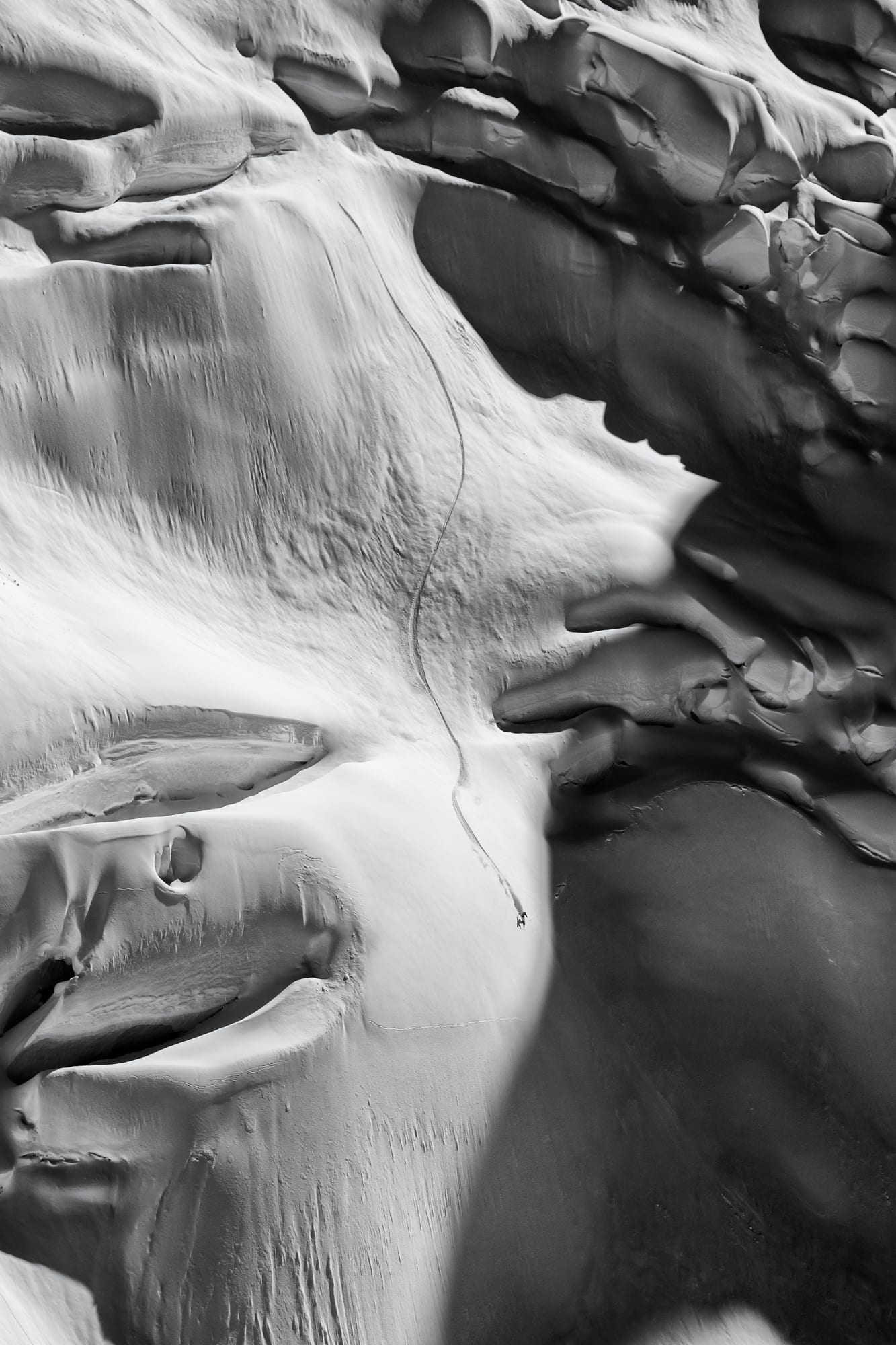
Sage Cattabriga Alosa, Alaska, Extreme-Skiing, 2010. Digital print, 40 x 28 in. 101.6 x 71.1 cm)
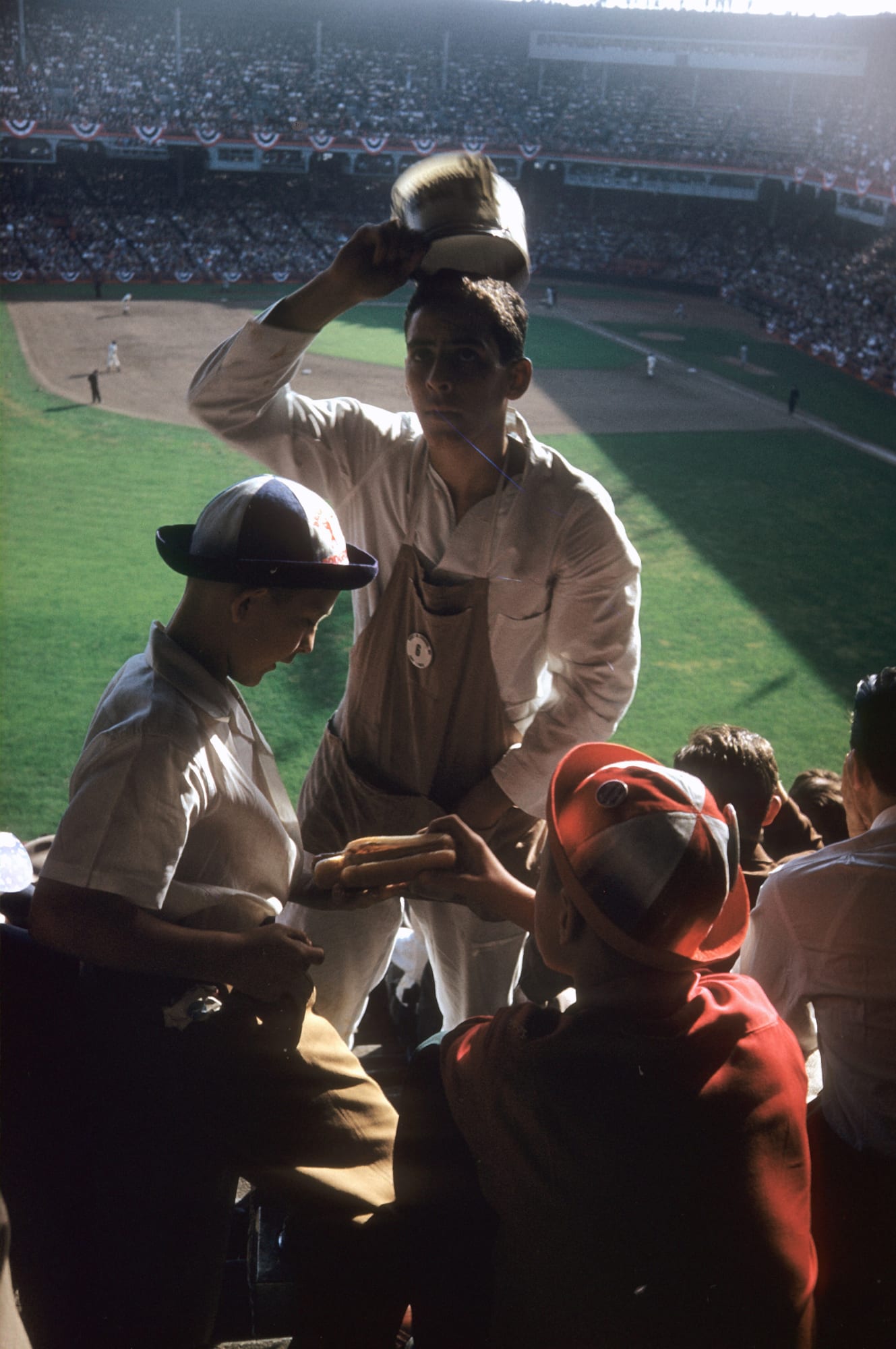
View of hot dog vendor in stands during New York Yankees vs Brooklyn Dodgers game at Yankee Stadium. Bronx, NY, 1953

The Golden Arm, Johnny Unitas, 1958. Gelatin silver print, 12 3/4 x 18 1/4 in. (32.4 x 46.4 cm)
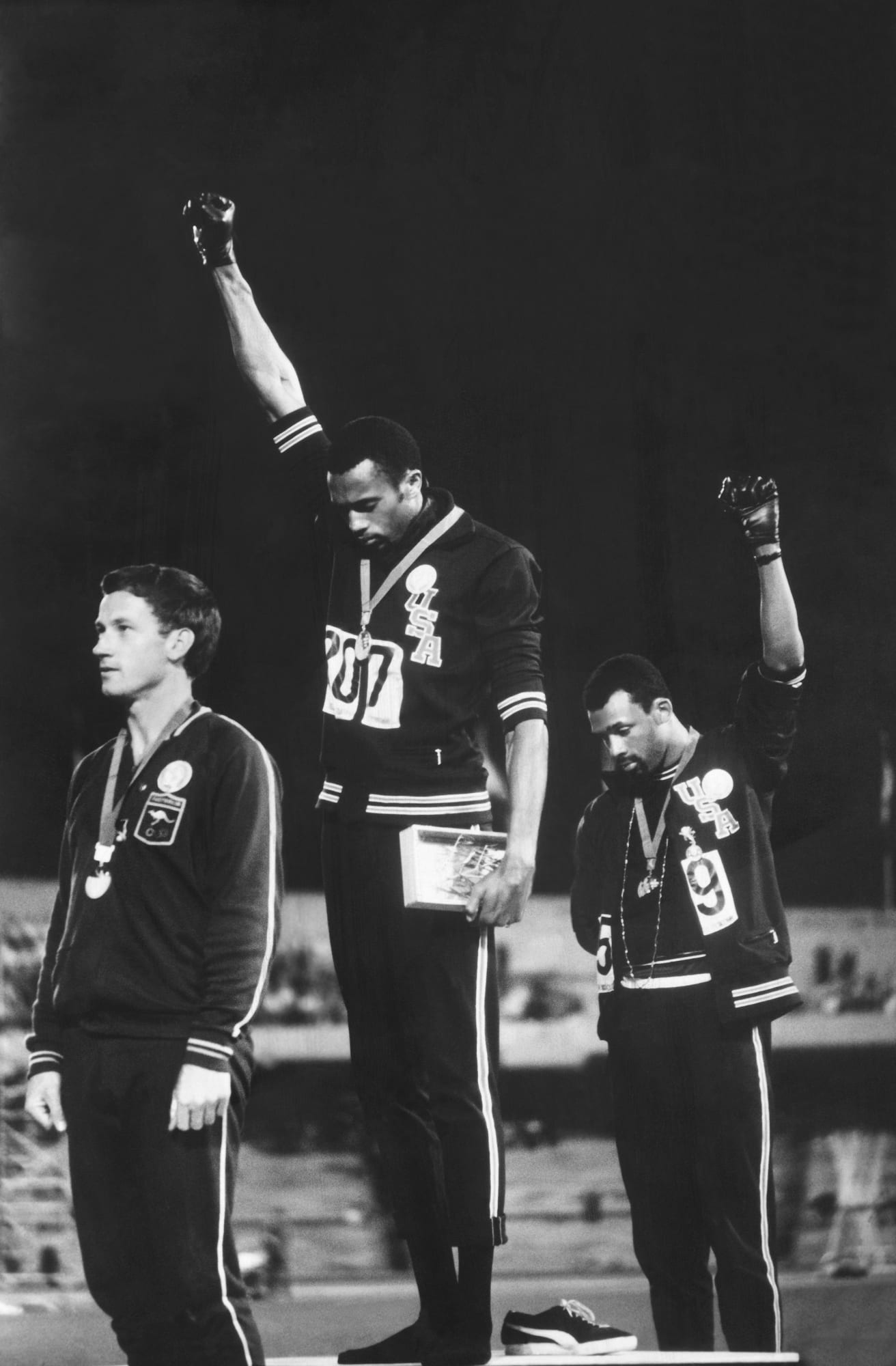
American track and field athletes Tommie Smith (C) and John Carlos (R), first and third place winners in the 200 meter race, protest with the Black Power salute as they stand on the winner's podium at the Summer Olympic games, Mexico City, Mexico, October 19, 1968. Australian silver medalist Peter Norman stands by, 1968; printed 2016. Inkjet print, 14 x 9¼ in. (35.6 x 23.3 cm).
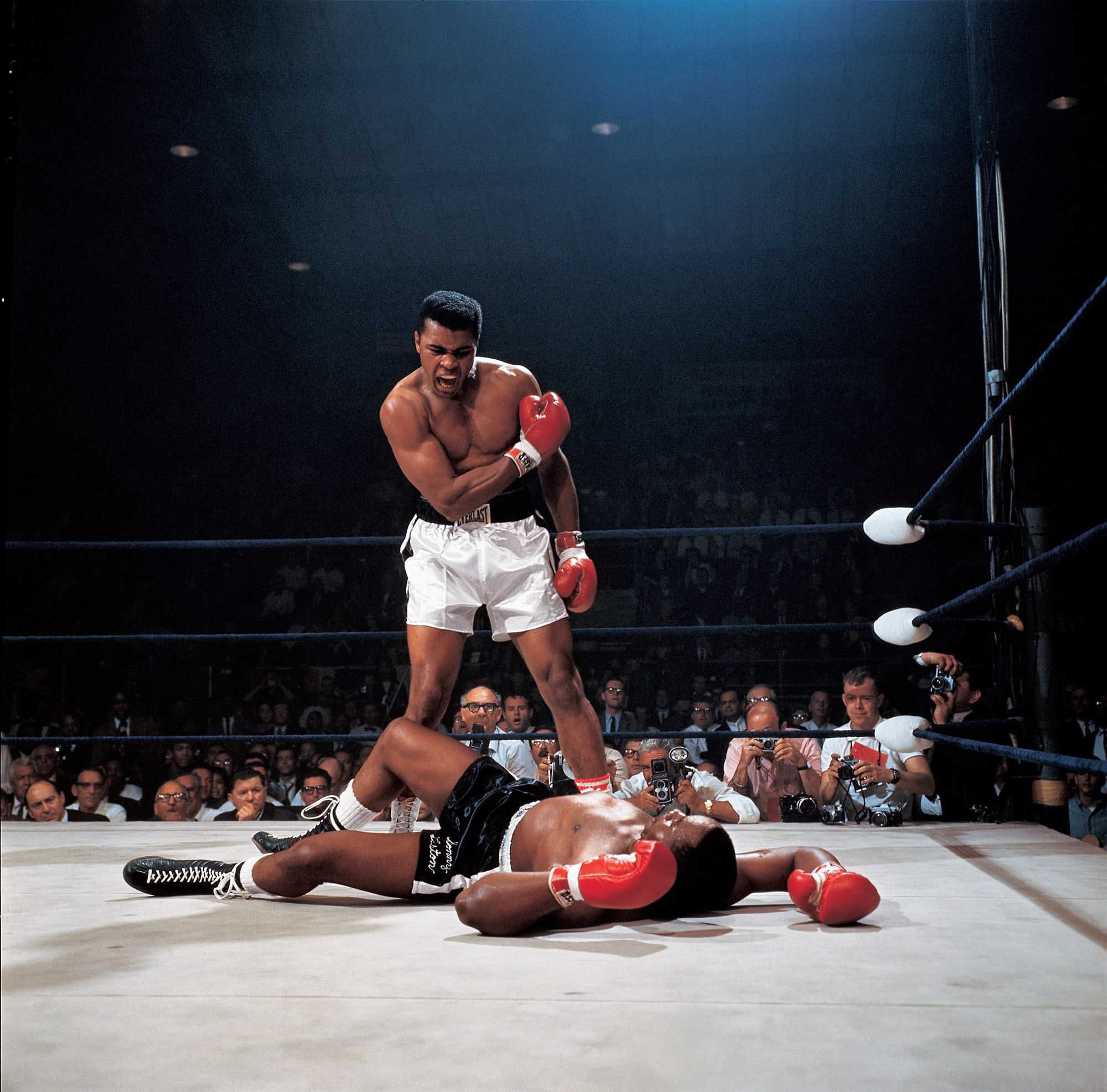
World Heavyweight Title: Muhammad Ali in action after first round knockout of Sonny Liston at St. Dominic's Arena, 1965

Narrow Escape – Fire Incident in Hockenheim, German F1 Grand Prix, July 31, 1994, printed 2016. Inkjet print, 7 1/2 x 11 1/2 in. (19.1 x 29.2cm)

Avi Torres of Spain sets off at the start of the 200m freestyle heats, Paralympic Games, Athens, September 1, 2004, printed 2016. Inkjet print, 14 x 9½ in. (35.6 x 24.1 cm)

Serena, 2004, printed 2016. Inkjet print, 8 1/2 x 12 7/8 in. (21.6 x 32.8cm)

Football in Guinea Bissau, March 3, 2012, printed 2016. Inkjet print, 13 5/16 x 20 in. (33.9 x 50.8 cm)
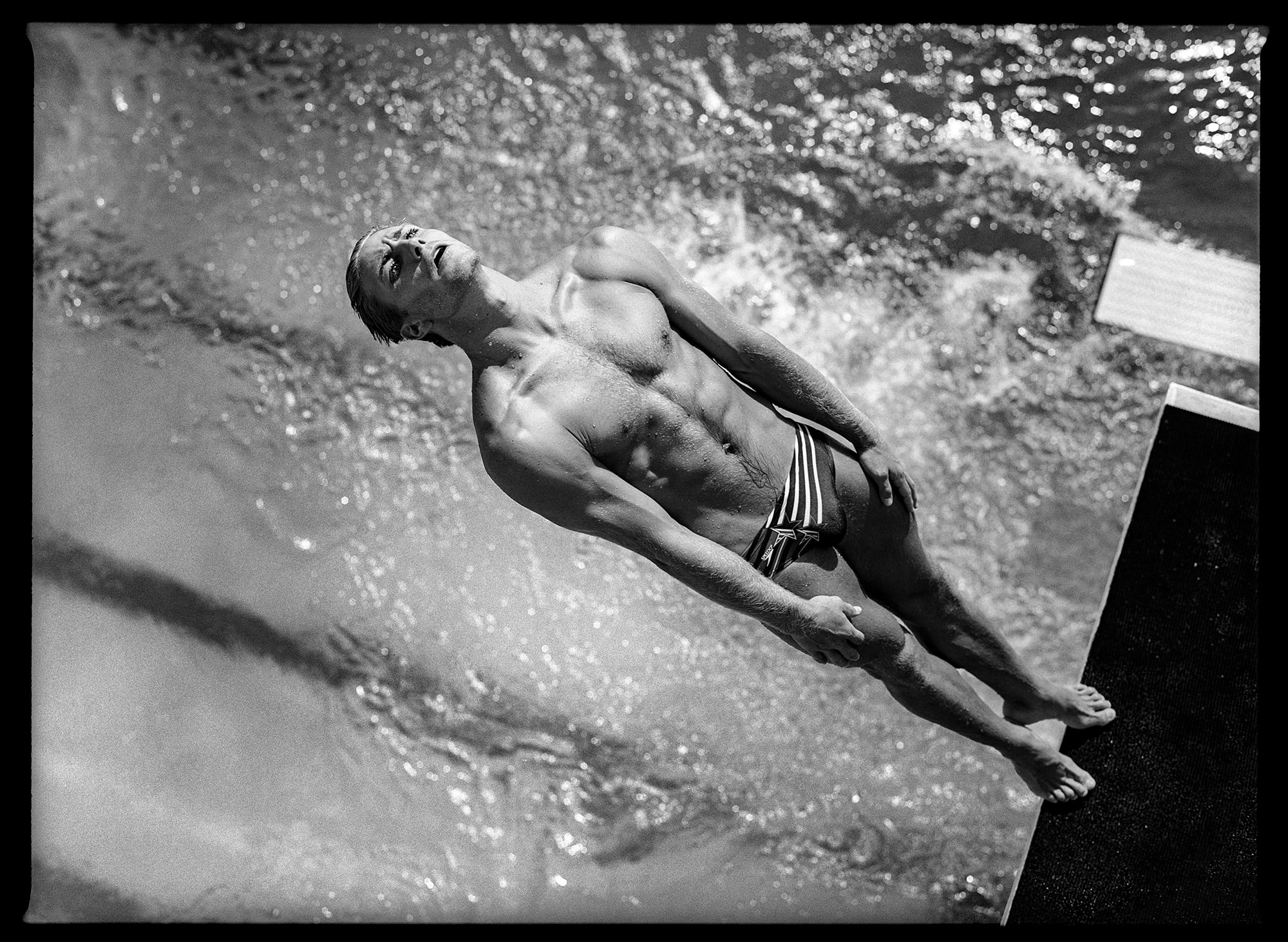
Platform diving, Olympic previews, Fort Lauderdale, Florida, May 1996. Digital inkjet print, 20 x 24 in. (50.8 x 61 cm)

Men's Beach Volleyball match between Brazil and Canada, London Olympics, The Horse Guards Parade ground, London, 2012. Archival inkjet print, 40 x 60 in. (101.6 x 152.4 cm).

Laura Flessel, 2001. Chromogenic print, 31½ x 39 6/8 in. (80 x 101 cm)

Boxing Study 1805 Sergio Martinez, 2010. Archival pigment print, 42 x 42½ in. (106.7 x 108 cm). Photograph by Howard Schatz from At the Fights: Inside the World of Professional Boxing.
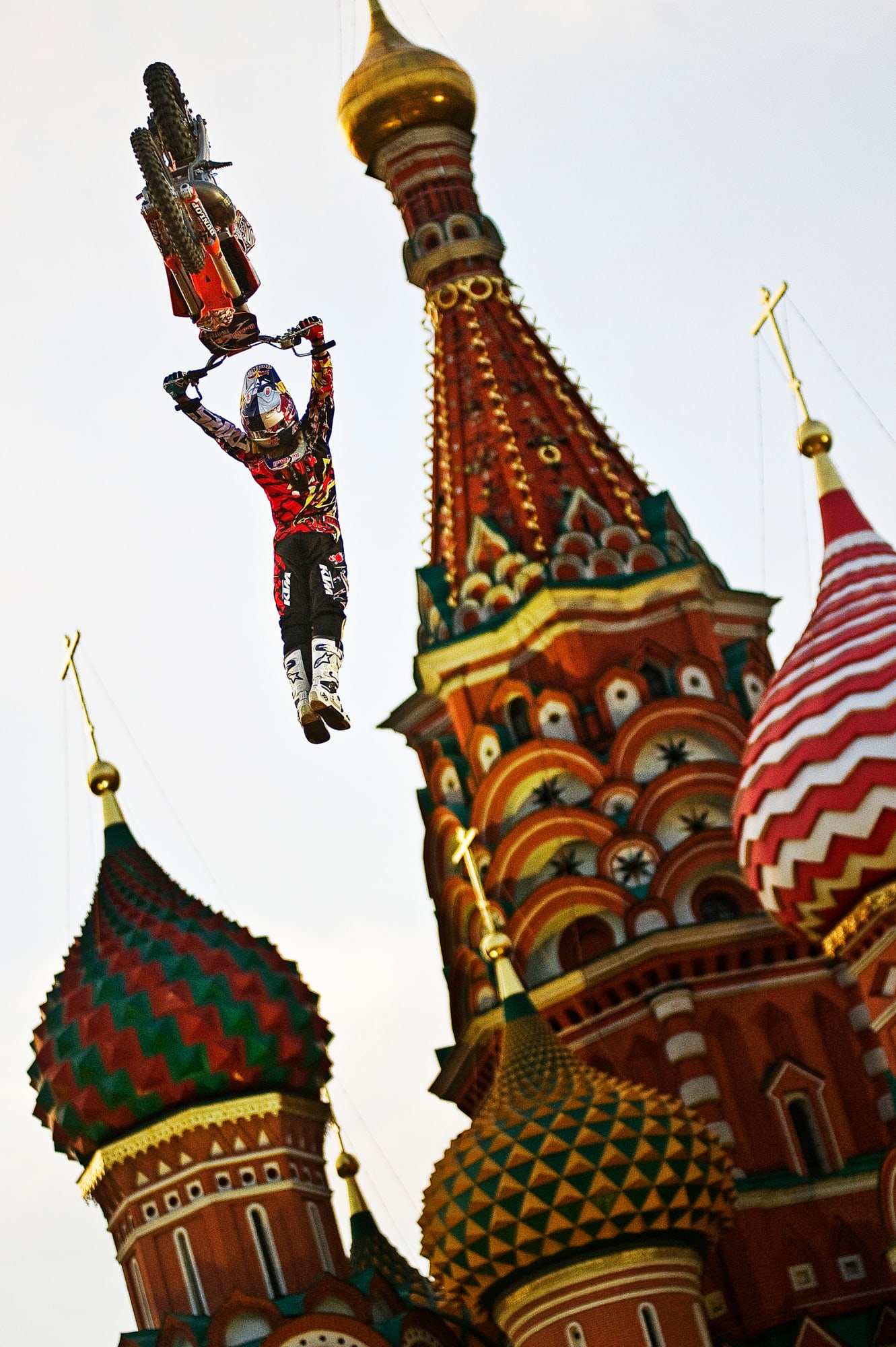
Levi Sherwood of New Zealand performs in front of the St. Basil’s Cathedral in Moscow’s Red Square, Russia, June 24, 2010
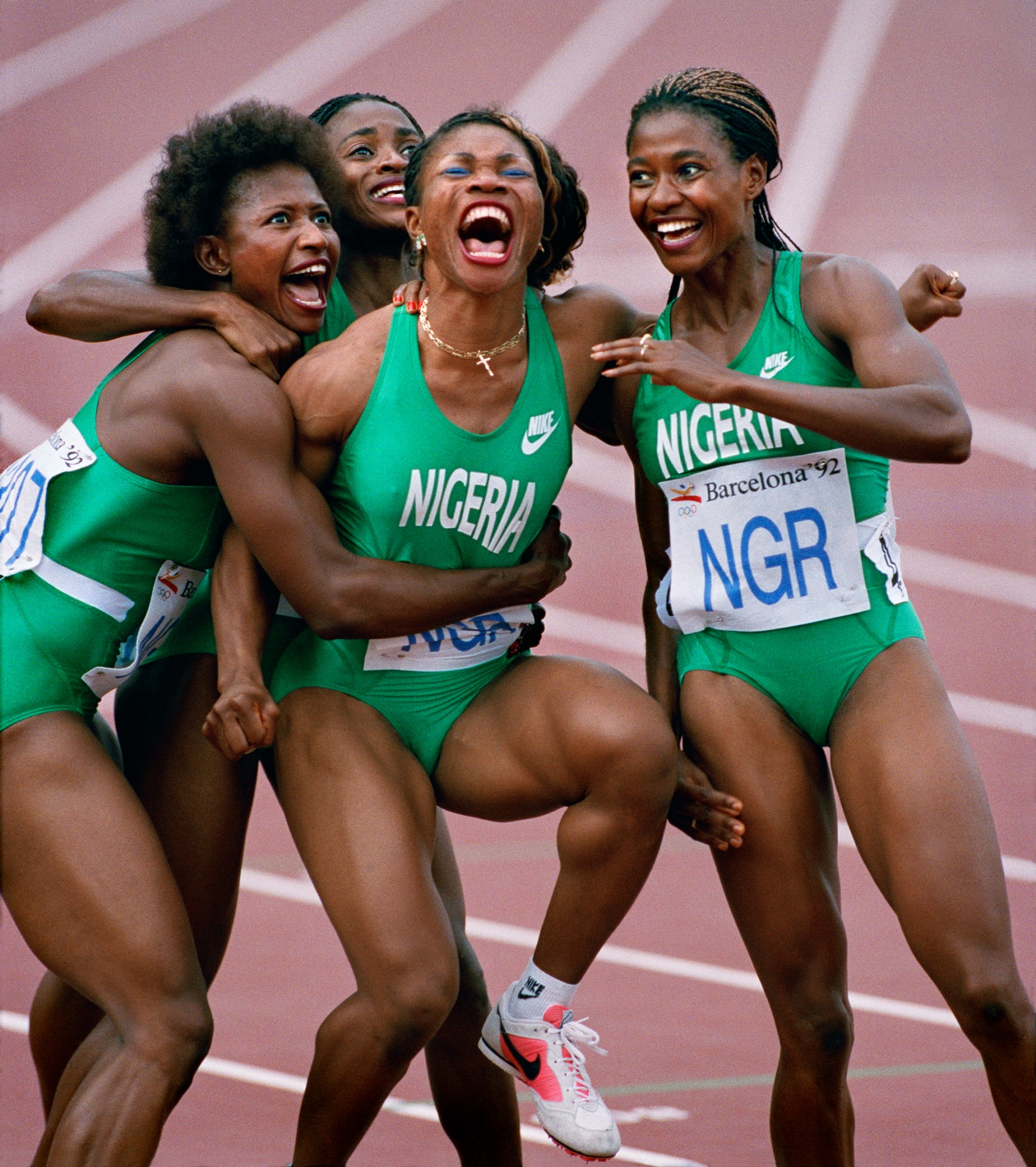
Nigerian Relay Team, Olympics, Barcelona, 1992, printed 2016. Inkjet print, 17 7/16 x 19 5/8 in. (44.3 x 49.9 cm)

Freefall, Michael Tomchek leaps off Castleton Tower (400ft) as fellow BASE jumpers look on, Castle Valley, Utah, 2010, printed 2016. Inkjet print, 13 1/4 x 20 in. (33.9 x 50.8 cm)

Blue Sentado, from the series Lucha Libre, circa 2005. Color photograph.
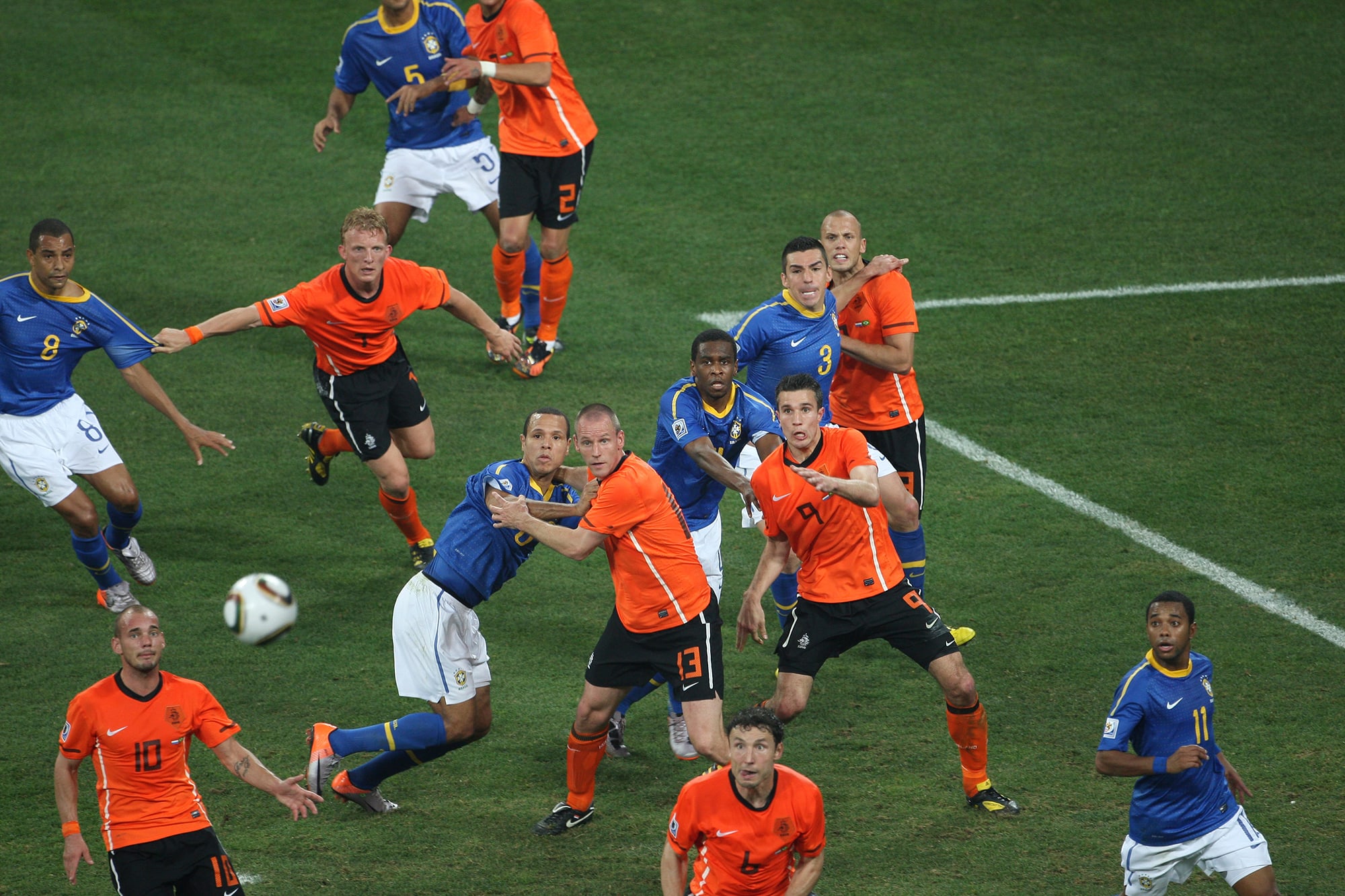
World Cup, Netherlands vs. Brazil, July 2, 2010, printed 2016. Inkjet print, 9 5/16 x 14 in. (23.7 x 35.6cm)

Australian Swimmer Matthew Dunn, 1993, printed 2016. Inkjet print, 8½ x 14 in. (21.7 x 35.6 cm)
Photos: Neil Leifer/Sports Illustrated (Ali), collection of Krystle Wright (BASE jump), courtesy Eamonn McCabe (Heysel Stadium Disaster), courtesy Lucy Nicholson/Reuters (Alzheimer's Ping Pong Therapy)
